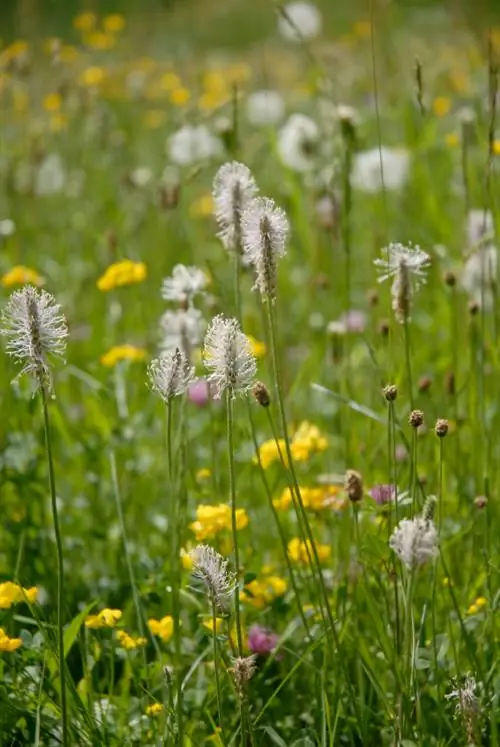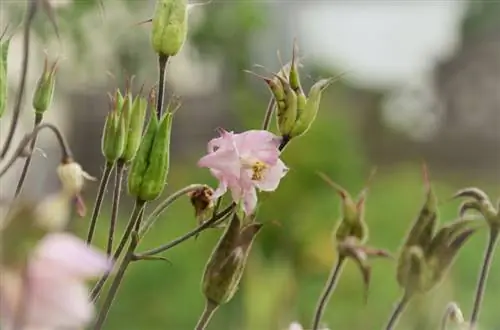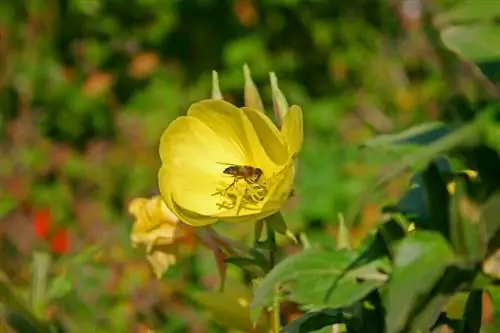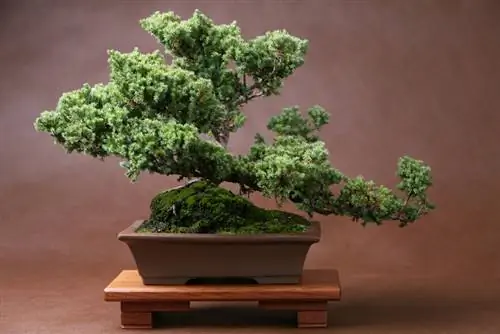- Author admin [email protected].
- Public 2023-12-16 16:46.
- Last modified 2025-06-01 06:02.
Over the years, hydrangeas take on voluminous dimensions. This creates a tight space in the bed. Downsizing could solve the space problem. In fact, there are two approaches available as a solution. Read here how to skilfully reduce the size of hydrangeas.

How can I effectively reduce the size of my hydrangeas?
To reduce the size of hydrangeas, you can reduce their size by either division or pruning. Division is best done in late fall or early spring, while pruning takes place in spring or February, depending on the hydrangea species.
Can I make my hydrangeas smaller?
In the right location, hydrangeas (Hydrangea) can not only grow very old, but also very large. In order to curb the expansive growth, you can reduce the size of an oversized hydrangea with a clear conscience. Hobby gardeners also use frost damage as an opportunity to reduce the size of the affected hydrangea. There are two methods to choose from that can be used for every type of hydrangea:
- Best option: reduce the size of the hydrangea by dividing it.
- Alternative: Reduce the size of the hydrangea by cutting it back.
Shrinking hydrangeas by dividing them - how do I do it correctly?
The best time for division is inlate autumn when a hydrangea has bloomed. A second time window opens in early spring. Then, however, farmer's hydrangea (Hydrangea macrophylla) and plate hydrangea (Hydrangea serrata) acknowledge a reduction in size through division with the loss of this year's flowering period. How to do it right:
- Pick off the root ball in a circle in the diameter of the bush crown.
- Lift the hydrangea out of the ground with a digging fork.
- Saw the root ball into two or more parts.
- Pick off dead ball segments, cut off or saw off frozen plant parts.
- Plant each section in a spacious planting hole and water.
Shrinking farmer's hydrangeas by cutting them back - what's important?
Reducing the size of a hydrangea without strenuous digging and sawing isPruning in the sense of a rejuvenation cut If it is a farmer's hydrangea, it is to be expected that this year's flowering period will be lost. Hydrangea macrophylla produces its flower buds the previous year. An exception applies to Endless Summer hydrangeas, which also bloom on new wood.
To reduce the size of a farmer's hydrangea, cut off all excess ground shoots at the base in spring. Leave the desired number of unbranched young shoots standing for a new structure in a slender form.
Shrinking panicle hydrangea by pruning - how does it work?
In contrast to farmer's hydrangeas (Hydrangea paniculata), panicle hydrangeas lay theirflower buds on this year's wood. For this reason, a panicle hydrangea tolerates reduction in size by pruning without loss of flowering time. The following cut is also suitable for reducing the size of snowball hydrangeas (Hydrangea arborescens):
- Best time is in February.
- Cut all flower shoots from the previous year back to two buds.
- Important: Place the scissor blades just above an intact pair of buds without leaving any stubs behind.
- Cut off a shoot at forks as additional slimming.
- Remove dead and excess shoots from the ground.
Tip
Distinguish between intact and frozen hydrangea flower buds
For farmer's hydrangeas, frost damage to flower buds is a big issue. Most Hydrangea macrophylla produce their inflorescences the previous year. The delicate buds are often defenseless in severe frost. When it comes to pruning or pruning, hobby gardeners should be familiar with the difference between he althy and dead buds. Intact buds are plump and firm. Frozen flower buds are brown, soft or crumbly.






